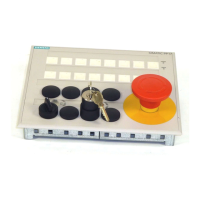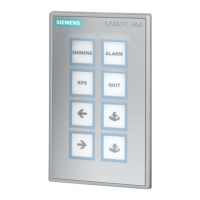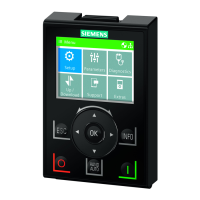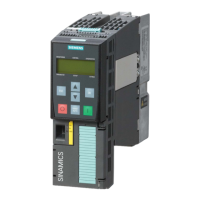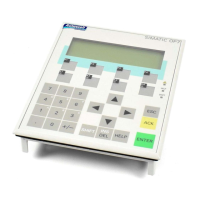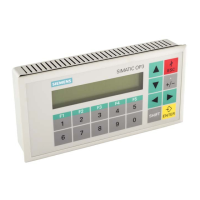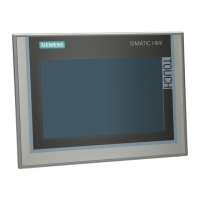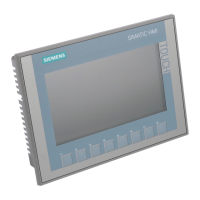
Do you have a question about the Siemens SIGMASYS C and is the answer not in the manual?
| Product type | Control Panel |
|---|---|
| Series | SIGMASYS |
| Manufacturer | Siemens |
| Operating Temperature | 0°C to 50°C |
| Protection Class | IP20 |
| Weight | 5 kg |
Details the scope, purpose, and target audience of the manual.
Provides information on accessing additional documentation and resources.
Explains symbols, formatting, and conventions used throughout the document.
Clarifies the applicability and scope of the project planning instructions.
Lists essential software tools for system configuration and diagnosis.
Outlines constraints for detector zones and monitored lines.
Details the impact of component failures on system operation.
Discusses necessary protection against voltage surges for panels.
Guide to selecting panels based on system needs and detector count.
Guidelines for assigning alarm numbers for system organization.
Details limits for datapoints, zones, and outputs per panel.
Criteria for choosing suitable installation sites for panels.
Specifies installation requirements related to fire safety regulations.
Defines environmental conditions for control panel installations.
Provides physical dimensions and installation guidelines for panels.
Shows internal layout and component assignment for SIGMASYS C.
Illustrates internal layout and component assignment for SIGMASYS M.
Details component assignment to option slots in SIGMASYS M.
Table showing module placement within the SIGMASYS M.
Explanation of dual SOC functionality for system redundancy.
Description of the SOC P module and its benefits.
Information on connecting SIGMANET P couplers.
General overview of available interfaces and device connectivity.
Details printer connections and types supported by the system.
Specific connection details for the DL3750+ printer.
Specific connection details for the T2240/9 printer.
Connection information for the FD60 thermal printer.
Information on the printer protocol converter.
Details on connecting and utilizing the GMA Manager.
Information on spur operating panels and their versions.
Details on D100 interfaces and system coupling.
Describes how system events are identified and processed.
Configuration of day/night modes for alarm and control functions.
How alarms are managed and presented to operators.
Describes system behavior with two detector zones.
Describes system behavior with two detectors.
Functionality for buffering alarms, detailing supported modules.
Setting delays for event forwarding from detectors.
Using virtual I/O for signaling and automating operations.
How to change ÜE assignments using commands.
Changing detector evaluation algorithms via commands.
Procedure for synchronizing system time across panels.
Adjusting cycle times for SIGMALOOP communication.
Enabling simultaneous operation of BMT and IMT branches.
Parameterizing and displaying alarm counters.
Connecting local alarm devices for immediate alerting.
Connecting alarm receivers for remote alerting services.
Details on the key depot for building access control.
Features and connection of the fire brigade operating panel.
General information on transponders and loop elements.
Overview of various loop elements used in the system.
Technical details of the Maxitransponder and 4STE control module.
Description of the FDCIO222 module's inputs and outputs.
Information on the FDnet transponder FDCIO223.
Details on the SPF5300 contact coupler.
Information about the SIGMASPACE gateway.
Description of the SPF3300 zone operating panel.
Overview of available outputs and their functions.
Details on the SPF3200 indicator panel control facility.
Information on the SPF5100 control module.
Description of the SPF5200 multiple control facility.
Details on the SPF3110 external alarm display module.
Functionalities and restrictions of the SIGMALOOP splitter.
Technical specifications for transponders and couplers.
Explains cycle times for signals based on operating conditions.
Details on configuring extinguishing control modules.
Control commands for gas extinguishing systems.
Activation criteria for preaction sprinkler systems.
Overview of the SIGMALOOP extinguishing interface features.
Components of the FDnet extinguishing interface.
Description of FSA systems for closing fire protection traps.
List of power supply units approved for FSA systems.
General explanation of how control facilities are configured.
How alerting facilities function and are controlled.
Functionality and control of evacuation alarms.
Use of actuators for activating control equipment.
Monitoring control lines according to VdS standards.
How display actuators function as indicators.
Control facilities for FSA and fire section control.
Control patterns for detector and event displays.
Defining custom control behavior for outputs.
Summary of control criteria for various functions.
Control patterns for alerting, evacuation, and display functions.
Control patterns for ST (control facility) functions.
Requirements for connecting to the mains power supply.
Guidelines for proper earthing of system components.
System requirements for independent power sources.
Information on battery types and installation for backup power.
Formula and guidelines for calculating system current requirements.
How to determine required battery capacity based on bridging time.
Power supply considerations for peripheral devices.
Using SIGMASYS empty housing for power supply units.
Features and specifications of the GMG-S module.
Comparison of GMG-S with AMI and GMG modules.
Explanation of pulse-polling technology used in PMG-S.
Comparison of PMG-S with AMP modules.
Information on SIGMASYS monitored lines and their configurations.
Details on configuring monitored lines as spurs.
Details on configuring monitored lines as loops.
Setting sensitivity for SIGMAPLUS smoke detectors.
Guidelines for maximum line lengths in loops and spurs.
How load factors affect loop element connections.
Connecting Sinteso elements to FDnet.
Network layout and cable recommendations for FDnet.
List of supported Sinteso elements and their applications.
Parameter sets for specific detector types.
Parameter sets for linear smoke detectors.
Configurable sound patterns for alarm devices.
How to calculate maximum elements and lead length.
Table listing load factors for FDnet elements.
Key features and capabilities of the SIGMANET network.
Using modems to bridge longer distances in SIGMANET.
How to operate the SIGMANET system.
Overview of available operating panels for SIGMASYS.
Features of the SIGMANET operating panel.
Different types of operating panels and their functions.
How information is displayed on operating panels.
Functionality of the mobile operating panel.
Management of central and remote AT releases.
How central AT release is managed.
How remote AT release is managed.
Example of planning a SIGMALOOP network layout.
Table showing feature availability across software versions.
Detailed technical specifications for system components.
Glossary of technical terms used in the manual.

